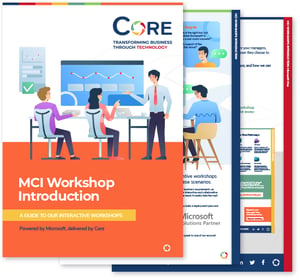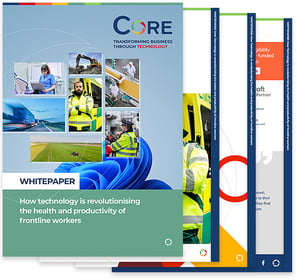Intranets are a vital part of any modern organisation’s IT infrastructure. They allow teams and individuals, from senior management to temps, to communicate quickly, easily and on a large scale when necessary. What form your intranet takes will depend on the scale of your organisation and how you want your intranet to work for you.
At a most basic level, intranets enable communication and sharing of information between colleagues. More sophisticated intranet solutions integrate with existing software and allow employees to share and store documents for better collaboration.
Whatever the capabilities of your intranet, they are a good investment for most companies; but cost will always be one of the main factors that influences what kind of intranet solution you get, how it is built, and who builds it.
Before making these decisions, it’s important to have a plan in place that will bring your intranet to fruition, from the initial idea to implementation. This blog discusses the steps you can take to make sure your company intranet is cost-effective, including key questions to ask - starting with your reasons for having one...
What do you want your intranet to do?
What do you want from your intranet? How could having an intranet make a positive difference to your organisation? What problems could having an intranet solve? These are all questions to ask when deciding what you want your intranet to do and how you want it to serve you.
Large organisations with a high volume of users, and other companies who want a comprehensive, full-featured intranet will inevitably pay more than those who want a simple platform for internal communication.
To make sure you get exactly what you pay for, and that you aren’t paying for additional features you won’t use, you should consult the teams in your business to find out exactly what functionality your intranet needs.
Start by asking stakeholders their priorities for the intranet; what tools would be most useful to them? You can refine this list even further by dividing into ‘must-haves’ and ‘nice-to-haves’. If you are outsourcing your intranet to a third-party (more on that later), have this list ready before approaching vendors. This way, you won’t be tempted to add on extra features that you don’t really need. Equally, by performing a consultation you’ll have a ‘bare minimum’ list of features that absolutely must be included in your intranet. The vendor will also be able to give you a realistic time frame and cost using your list.
As well as consulting key stakeholders, you should also ask other teams who will use the intranet what features they would like to see. This will give you a more complete picture of how your intranet could be used, and make sure the intranet solution you choose is useful to everyone in your organisation.
Of course, you don’t have to incorporate every feature suggestion in your final intranet; some may be unrealistic, outside your budget or far-fetched. But you will probably find that the same requirements crop up again and again; a great indicator that this is a ‘must-have’.
At a minimum, you might want your intranet to improve employee engagement, make communication between teams easier, centralise documents, enable collaboration and break down siloes in your organisation.
Once you have determined the features your intranet needs to have, it’s time to develop a strategy to make your intranet vision a reality…
Creating an intranet strategy
To get the most out of your intranet and the best return on your investment, you need to create a strategy outlining each step of your project, from planning to installation and then beyond, to post-implementation support and how you will keep your intranet moving forward. Having a plan in place will make the process more efficient and help you stick to budget.
As part of your strategy, you should think about:
- Your objectives – define these before anything else. What do you want to get out of your intranet? What problems can it help solve? What do you want your intranet to be used for? (see above).
- Roles and responsibilities - who will look after various aspects of your intranet? Will you need to hire developers for startup or is there enough internal resource?
- The structure of your intranet – how will information be arranged and accessed?
- Branding – will your intranet be company branded or are you happy with an out of the box solution? Does it need to be customised or will a generic design suffice?
- Installation and execution – who will install the intranet? Will it be integrated with other platforms? Is there a disaster recovery plan in place?
- Employee engagement – how will you get employees to use and engage with the new intranet?
- Internal training – will training be given to users and if so, who will provide the training?
- Evaluation and analysis – once the intranet has been widely adopted, what kind of analysis and reporting will be needed to monitor its usage. Who will be responsible for this?
Once you have a strategy in place, you can start to think about the technical aspects of your intranet.
Should our intranet be on-premise or cloud-hosted?
Your intranet can be on-premise or hosted in the cloud. Traditionally, many company intranets were deployed in-house due to privacy and security concerns, but this has changed.
On-premise intranets can put a strain on your IT resources, because the right infrastructure needs to be in place to support and maintain the intranet. If it isn’t, there could be outages and downtime which may be more or less of a problem depending on the functions your intranet is performing for your organisation.
An on-premise intranet also puts strain on your servers, and if it’s not cloud-hosted or provided to you as a service you will be responsible for performing upgrades and updates to software. This can be expensive and time-consuming.
For these reasons, many companies opt for a cloud-hosted intranet provided by a third-party, as a service for a set monthly cost. This way, the third-party provider is also responsible for performing upgrades and updates, as part of the monthly fee.
Should we build our intranet in-house or buy it from a third-party?
If you have an internal developer with the skills to build your intranet in-house, then you could build it on-premise. But this isn't without its problems...
Often, the internal skill set, although good, will not be the same calibre as a third-party specialist, who may have a team of developers with extensive experience specifically in building intranets. Building your intranet in-house carries some risk that an external provider won't have; if it's not built properly, the intranet may perform poorly, experience problems and there may be downtime when it cannot be accessed at all.
Similarly, if not created correctly you may find you need to invest in redeveloping or even replacing the intranet further down the line.
In contrast, outsourcing your intranet to a specialist, either as a one-off or on an ongoing service, will usually result in a slicker, faster, more efficient intranet with fewer issues in the future. The initial outlay may be more expensive than building in-house, but in the long run it will probably be more cost-efficient.
Should our intranet be customised or out of the box?
This depends largely on your budget, the scale of your organisation and whether you have to decided to outsource your intranet or build it yourself.
If you only need a simple intranet, most out of the box solutions feature a staff directory and collaboration tools, so this might be enough. If you require a little more customisation but don't need a truly bespoke intranet with lots of additional features, some third-parties offer intranet packages with different levels of functionality at a different price. This lets organisations benefit from the lower cost of an out of the box solution, while still enjoying an element of customisation. Core offer this with our Beezy-powered intranets. Three different packages are available – bronze, silver and gold - and each package offers a different level of functionality at a different price, so you can choose the option that best suits your needs and budget.
Large-scale organisations with complex intranet requirements may be better off having a bespoke intranet made for them.
You can also have your company intranet customised with company branding, including colours and logo. Company branding can bring a professional and personalised touch to your intranet and make it more appealing to users.
Customisation can be expensive, so before you decide, ask yourself whether you are over-complicating things. Are you expecting too much? Are you adding on features you don’t really need? Is your intranet becoming full of ‘nice to haves’ as well as ‘must haves’? After this, if you still decide you need a customised intranet solution, shop around and put all your requirements in a request for proposal.
Upgrades and updates
Inevitably, your intranet will date. User expectations will change, as new, more advanced capabilities come to light, and people will expect better functionality as technology advances.
To make sure your intranet is kept as current as possible, you will need to perform regular updated and upgrades. You may also have to renew licences depending on software. Updates are especially important if the intranet integrates with other platforms, so that all of them run as efficiently as possible.
If your intranet is provided as a service, these updates will more than likely be included in the cost if your package, even if only for a set amount of time. This takes the burden and cost of upgrades away from your organisation, and is preferable for most companies.
If you are managing your company intranet in-house, it will be up to you to pay for and implement upgrades. Consider this when choosing whether to have your intranet in-house or outsourced.
Ongoing support
Your intranet is going to need constant and ongoing support and maintenance to keep it functioning properly. Whether you choose to perform this yourself or outsource, is up to you. As with upgrades, your support and maintenance may be included in your package if you have outsourced your intranet. In general, it's usually more cost-effective to outsource IT support than use in-house resource.
Get people to use it!
With your intranet ready to go, it’s time to get people using it! To get a return on your investment, you need people to engage with and enjoy using your new intranet, and you need your intranet to stay current. Depending on how big your organisation is, this might need a project manager.
The project manager tasked with user-adoption could be an existing staff member, a new hire, or you could outsource the task to a third-party. If your intranet is provided as a service, a user-adoption manager may be included in the cost.
Core provide remote user training via Skype for Business and are always on hand to provide support and advice as your new company intranet is rolled out.
Once your intranet is in widespread use, you should regularly review usage, engagement and activity to check it is fulfilling its potential. Intranets that are left to stagnate quickly lose their usefulness (and you lose any return on investment). Usage statistics and analysis might be included in your package.
Presenting a business case
This blog makes clear the advantages of having a company intranet, but it can be hard to persuade the people holding the purse strings that an intranet is a good investment.
If you are tasked with presenting a business case for an intranet, it can be helpful to look at it from another perspective. Instead of asking whether your company can afford to have an intranet, explain why your company can't afford not to have one!
How can Core help?
As this blog has explained, the cost of your intranet, and how cost-effective it is, depends on many factors. As long as you are clear on what you need and don't need, and how much you are willing to spend, you can usually find an intranet to suit your requirements, within your budget.
Core offer a range of intranets for large organisations, using award-winning Beezy software to make them.
Our intranets are powerful, intuitive and let your teams communicate and collaborate effortlessly.
Your intranet can be deployed on-premise or over the air (OTA) and are available in three fixed-price packages:
To discuss your intranet requirements with Core, contact us today. We can also provide a free virtual demo for organisations further along their intranet journey.







